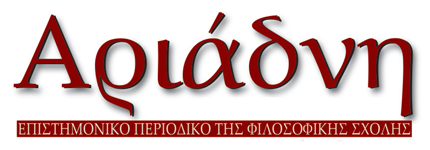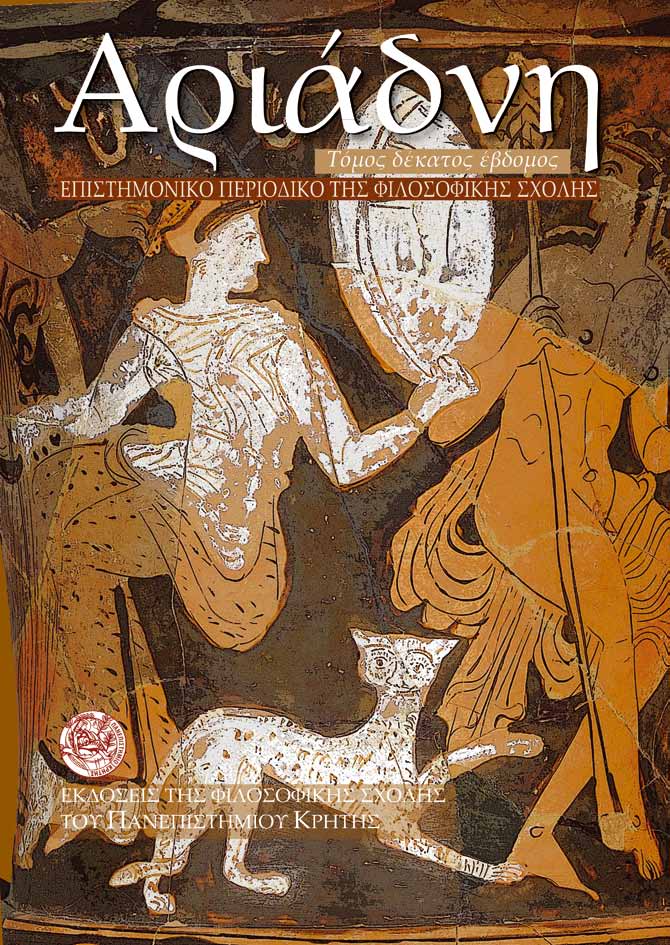Μια νέα προσέγγιση του γυναικείου σώματος στο Ιπποκρατικό Corpus και στο Ασκληπιείο της Επιδαύρου: Θεραπεία και ασθένεια
DOI:
https://doi.org/10.26248/ariadne.v17i0.394Περίληψη
THIS PAPER considers the sociopolitical connotations involved in the discourse about health and disease and relative ‘religious’ representations using a dual approach: a) by focusing on the construction of the female body in this context and b) by tracing the nature of the relationship between the Hippocratic concept of the human body and the development of the cults of Asclepius in the Classical period.
To this end, I first demonstrate that the morbid qualities attributed to the differentiating ‘elements’ of the female body –i.e. the womb and the menses– create in return a female identity with intrinsically morbid characteristics in relation to her reproductive role, which serves in reconstructing and regulating gender roles through therapeutic recommendations. Secondly, I show that these connotations are exploited in the cults of Asclepius to designate women’s personal therapy by the god as a social privilege. The votives, including the Iamata in Epidauros, serve in this context as memorials of personal victory over disease, while being displayed in a public place. The wide participation of women in the cults of Asclepius gives us the opportunity to trace their different interests, even when related to reproduction.
The questions raised focus on the way the human body, and particularly the female body, becomes an ambivalent semantic field of invented connections and articulations of wider sociopolitical relationships, where subjects find themselves in a versatile position between complicated interventions of power.
Λήψεις
Δημοσίευση
Πώς να δημιουργήσετε Αναφορές
Τεύχος
Ενότητα
Άδεια
Οι εργασίες που δημοσιεύονται στο περιοδικό μπορούν να χρησιμοποιηθούν ελεύθερα για μη-εμπορικούς σκοπούς με την προϋπόθεση ότι γίνεται αναφορά στους συγγραφείς και την πρώτη δημοσίευση. Στην περίπτωση που το άρθρο αλλοιωθεί, τροποποιηθεί ή δημιουργηθεί κάτι νέο βασισμένο στο αρχικό, το έργο που θα προκύψει θα μπορεί να διανεμηθεί μόνο με την ίδια ή παρόμοια άδεια (Creative Commons Attribution-NonCommercial-ShareAlike 4.0 International License).


